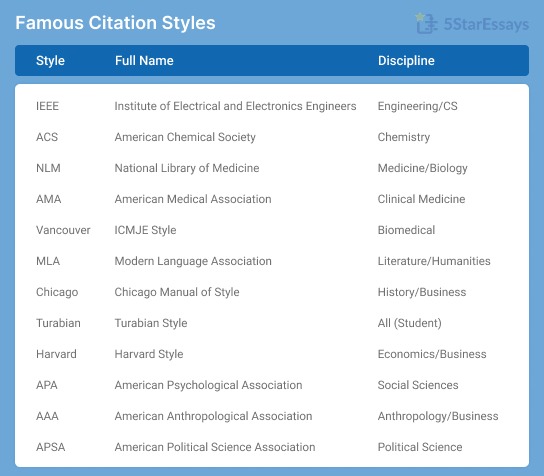IEEE Paper Formatting
General Manuscript Requirements
IEEE papers follow specific formatting guidelines for professional presentation. Use standard 8.5" × 11" paper with 1-inch margins on all sides (top, bottom, left, right). Unlike ASA citation format which requires wider left margins, IEEE uses uniform margins throughout.
Use Times New Roman font at 10 points for the main text body. This smaller font size distinguishes IEEE from most academic styles that use 12-point fonts. Section headings use larger font sizes: 12 points for main headings and 11 points for subheadings. All text should be single-spaced, not double-spaced like MLA format, making IEEE papers more compact. For detailed guidance, review a complete citation style guide.
Format your paper in two-column layout for journal submissions, with a 0.17-inch gap between columns. For student assignments and conference submissions, professors often accept single-column format—always check specific requirements. Two-column format maximizes space efficiency and resembles published engineering journals.
Title and Author Information
Center your paper title at the top of the first page in 24-point font, bold. Below the title, center author names in 12-point font. If multiple authors, list them on the same line separated by commas. Below author names, list institutional affiliations in 10-point italic font. Include email addresses for correspondence.
For multi-author papers, use superscript numbers to match authors with their respective institutions if affiliations differ. This format efficiently presents authorship information while maintaining professional appearance.
Title page format: Paper Title (24pt, bold, centered) Author Name1, Author Name2, Author Name3 (12pt, centered) Department, Institution (10pt, italic, centered) Email addresses (10pt, centered)
Abstract Format
IEEE papers require an abstract immediately below the title and author information. The abstract should be 150-250 words summarizing your research objectives, methods, results, and conclusions. Format the abstract as a single paragraph in italic font with the heading "Abstract—" (bold italic, followed by em dash) at the beginning.
After the abstract, include 3-5 keywords or index terms in italic font introduced by "Keywords—" or "Index Terms—" in bold italic. These terms help readers find your paper in databases.
Section Numbering and Headings
IEEE uses Roman numerals for main section headings (I, II, III, IV). Number subsections using letters (A, B, C) and sub-subsections using Arabic numerals (1, 2, 3). This hierarchical numbering system clearly shows document structure.

Main section heading (12pt, bold, centered): II. METHODOLOGY
Subsection heading (11pt, bold, flush left): A. Experimental Design
Sub-subsection (10pt, italic, flush left): 1) Data Collection: Text begins immediately...
Do not add extra spacing before or after headings. Single-space throughout maintains compact presentation valued in technical publications.
IEEE In-Text Citations
Basic Numerical Citation Format
IEEE uses bracketed numbers for in-text citations, assigning numbers sequentially based on the order sources first appear. The first source cited receives [1], the second [2], and so on. When citing the same source again later, use the original number assigned to that source.
First mention: Smith demonstrated the algorithm's efficiency [1].
Later mention of same source: Additional testing confirmed these results [1].
Place citation numbers in square brackets at the end of the relevant sentence or clause, before the period. Unlike APA and MLA formats that place citations before the period, IEEE citations typically appear after punctuation for cleaner text flow. To gain a better understand about APA and MLA formats, you can review a detailed comparison by visiting an APA vs MLA format guide.
Standard placement: The proposed method improves processing speed [1]. Multiple approaches have been explored [2], [3], though results vary.
Multiple Citations
When citing multiple sources at once, list them in numerical order separated by commas. Use hyphens for consecutive numbers. Do not use semicolons, which are common in other citation styles.
Multiple non-consecutive sources: Several studies support this conclusion [1], [3], [7].
Consecutive sources: Previous research [2]-[5] examined this phenomenon.
Mixed consecutive and non-consecutive: These findings [1], [3]-[5], [8] demonstrate consensus.
Citing Specific Pages or Sections
When referencing specific pages, equations, figures, or sections, include that information within the brackets after the citation number. Use standard abbreviations: p. for page, pp. for pages, eq. for equation, fig. for figure, sec. for section.
Specific page: This theorem is proven in [4, p. 23].
Page range: The methodology is detailed in [2, pp. 156-160].
Specific equation: Using the formula in [3, eq. (5)], we calculate...
Figure reference: The circuit design in [1, fig. 3] illustrates this principle.
Skip the Citation Headache Let Expert Writers Handle Your Formatting While You Focus on Research Join thousands of students who've saved hours on citation formatting. Our experts ensure every source is cited perfectly in any style.
Author Names in Text
Unlike author-date systems, IEEE separates citation attribution from textual flow. When discussing an author's work, mention the author by name in your text, then provide the numerical citation.
Author mentioned: Smith [1] demonstrated that neural networks can optimize...
Multiple authors: Recent work by Johnson and Chen [2] explored quantum computing applications.
When the author's name isn't essential to your discussion, use only the numerical citation without naming authors in text. This keeps technical writing focused on content rather than personalities.
Citation without author mention: Neural networks can optimize resource allocation [1].
Standards and Patents
Engineering papers frequently cite technical standards and patents, which receive citation numbers like other sources. Format them clearly in your references list with appropriate identifiers.
Standard citation: The protocol follows IEEE 802.11 specifications [5].
Patent citation: This design builds on previous innovations [6].
IEEE References List Formatting
References List Organization
IEEE's references list differs fundamentally from alphabetical formats like APA and MLA. Number references sequentially based on citation order in your text, not alphabetically by author. The first source cited in your paper is [1] in the references, the second is [2], and so on. This citation-order system makes references list organization straightforward but requires careful tracking during writing.
Place your references list at the end of the paper after the conclusion, before any appendices. Center the heading "REFERENCES" (all caps, bold) at the top of the references section. List each reference flush left with its number in brackets, followed by source information. Unlike hanging indent formats, IEEE uses flush-left alignment for all lines of each reference.
References list format:
REFERENCES
- A. Smith, "Algorithm optimization," IEEE Trans. Comput., vol. 45, no. 3, pp. 234-245, Mar. 2023.
- B. Johnson, Digital Signal Processing. New York: McGraw-Hill, 2024.
Author Name Format
List authors with initials first, followed by surname (no comma between initials and surname). Use commas to separate authors. For 1-6 authors, list all authors. For 7 or more authors, list the first author followed by "et al."
One author: A. Smith
Two authors: A. Smith and B. Johnson
Three or more authors: A. Smith, B. Johnson, and C. Chen
Seven or more authors: A. Smith et al.
Journal Article Format
Journal articles are the most common source type in engineering papers. Include authors, article title in quotation marks, abbreviated journal title in italics, volume number, issue number, page range, and date.
Basic journal article: [1] A. Smith and B. Johnson, "Machine learning in robotics," IEEE Trans. Robot., vol. 39, no. 2, pp. 156-172, Apr. 2023.
Article with DOI: [2] C. Chen, "Quantum computing applications," Nature, vol. 587, pp. 234-240, Nov. 2024, doi: 10.1038/s41586-024-xxxxx.
Journal Title Abbreviations
IEEE requires abbreviated journal titles following standard conventions. Major IEEE journals have established abbreviations: IEEE Transactions on Computers becomes IEEE Trans. Comput., IEEE Journal on Selected Areas in Communications becomes IEEE J. Sel. Areas Commun.
For non-IEEE journals, use standard abbreviations from the ISO 4 standard or the journal's own abbreviation. Key abbreviation rules: capitalize all significant words, use periods after abbreviations, omit articles (a, an, the).
Common IEEE journal abbreviations:
- IEEE Transactions on Computers ? IEEE Trans. Comput.
- IEEE Transactions on Signal Processing ? IEEE Trans. Signal Process.
- IEEE Journal of Solid-State Circuits ? IEEE J. Solid-State Circuits
- Proceedings of the IEEE ? Proc. IEEE
Book Format
Include authors, book title in italics, edition (if not first), city, state/country, publisher, and year.
Basic book: [3] J. Martinez, Digital Electronics Fundamentals, 3rd ed. Boston, MA: Pearson, 2023.
Edited book: [4] R. Thompson, Ed., Advanced Networking Protocols. New York: Wiley, 2024.
Book chapter: [5] S. Davis, "Neural network architectures," in Handbook of Artificial Intelligence, A. Brown, Ed. Cambridge, UK: Cambridge Univ. Press, 2023, pp. 45-78.
Conference Paper Format
Conference papers are crucial in engineering research. Include authors, paper title in quotation marks, conference name (abbreviated if standard), location, date, and page numbers.
Conference paper: [6] M. Wilson and L. Anderson, "5G network optimization," in Proc. IEEE Int. Conf. Commun. (ICC), Rome, Italy, Jun. 2023, pp. 1234-1239.
Conference paper with DOI: [7] P. Lee, "Edge computing frameworks," presented at IEEE CloudCom, Sydney, Australia, Dec. 2024, doi: 10.1109/CloudCom.2024.xxxxx.
Running Out of Time? Need a Perfectly Cited Paper Fast? We Deliver Quality Under Pressure Tight deadline? Don't sacrifice citation quality. Our writers deliver properly formatted, thoroughly researched papers when you need them
Technical Standards and Patents
IEEE standard: [8] IEEE Standard for Ethernet, IEEE Std 802.3-2022, 2022.
Other organization standard: [9] International Electrotechnical Vocabulary, IEC 60050, 2023.
U.S. patent: [10] J. Williams, "Wireless power transfer system," U.S. Patent 10 234 567, Mar. 19, 2024.
Online Sources
Website with author: [11] R. Johnson. "IoT security best practices." IEEE Spectrum. https://spectrum.ieee.org/iot-security (accessed Nov. 15, 2024).
Website without author: [12] "Cloud computing trends," Amazon Web Services. https://aws.amazon.com/cloud-trends (accessed Nov. 15, 2024).
Online datasheet: [13] "ATmega328P datasheet," Microchip Technology, 2023. [Online]. Available: https://www.microchip.com/ATmega328P
Thesis and Dissertation Format
Master's thesis: [14] S. Martinez, "Machine learning for network optimization," M.S. thesis, Dept. Elect. Eng., Stanford Univ., Stanford, CA, 2023.
Ph.D. dissertation: [15] K. Chen, "Quantum algorithms for optimization," Ph.D. dissertation, Dept. Comput. Sci., MIT, Cambridge, MA, 2024.
IEEE vs Other Numerical Styles

IEEE vs Chicago Numerical System
IEEE citation style is based on Chicago Manual of Style's Notes-Bibliography system but adapted for technical documentation. While Chicago uses footnotes or endnotes, IEEE uses bracketed numbers in text. Both share citation-order organization principles, but IEEE simplifies formatting for technical efficiency.
Chicago (footnote): ¹ Arthur Smith, Algorithm Optimization (New York: McGraw-Hill, 2023), 45.
IEEE (bracketed number): Smith's work [1] demonstrates optimization techniques. [1] A. Smith, Algorithm Optimization. New York: McGraw-Hill, 2023.
IEEE vs Vancouver Style
Vancouver style, used in biomedical sciences, also uses numerical citations. However, Vancouver numbers references alphabetically, then cites by those numbers—a hybrid approach. IEEE numbers strictly by citation order.
Vancouver: Alphabetize references, then assign numbers [1], [2], [3]. Cite using these alphabetically-determined numbers.
IEEE: Number references as they appear in text. First cited source is [1] regardless of author name.
IEEE vs ACS Style
ACS (American Chemical Society) style uses superscript numbers¹,²,³ rather than brackets [1], [2], [3]. ACS also places citations before punctuation, while IEEE places them after. Both use citation-order organization.
ACS citation: The reaction proceeds rapidly.¹,²
IEEE citation: The reaction proceeds rapidly [1], [2].
When to Use IEEE Format
Use IEEE format for electrical engineering, computer engineering, computer science, telecommunications, robotics, electronics, and related technical fields. IEEE is required for IEEE publication submissions, including IEEE Transactions journals and IEEE conference proceedings.
Many engineering programs require IEEE format for senior design projects, capstone papers, and technical reports even when not submitting to IEEE publications. Always verify your instructor's or publication's requirements. If you're in other sciences or humanities, you'll use APA format, MLA style, or discipline-specific rules instead.
Still Learning the Ropes? Master Your Subject, Not Citation Manuals
Get Expertly Formatted Papers Let citation experts handle the technical details while you focus on learning and understanding your coursework. Smart students delegate smartly
8 Common IEEE Format Errors
| Error | Incorrect | Correct |
|---|---|---|
| 1. Alphabetizing References | Alphabetical order | Number by citation order |
| 2. Wrong Font Size | 12-pt text everywhere | 10-pt body, 12-pt headings |
| 3. Double-Spacing | Double-spaced paper | Single-spaced throughout |
| 4. Full Journal Names | Full titles used | IEEE-approved abbreviations |
| 5. Author Name Format | Smith, A. | A. Smith |
| 6. Semicolons in Citations | [1]; [3]; [7] | [1], [3], [7] |
| 7. Missing Page Numbers | No page ranges | Include pp. 234–245 |
| 8. Hanging Indents | Indented references | All lines flush-left |
1. Alphabetizing References Instead of Citation Order
Incorrect: Organizing references alphabetically by author surname like APA/MLA
Correct: Numbering references in the order they first appear in your text: [1] is the first source cited, [2] is the second, etc.
Why it matters: Citation-order organization is IEEE's fundamental principle. Alphabetizing references makes citation numbers meaningless and violates IEEE format requirements.
2. Using Wrong Font Size
Incorrect: Using 12-point font throughout the document (standard for APA/MLA)
Correct: 10-point Times New Roman for body text, 12-point for main headings, 11-point for subheadings
Why it matters: IEEE's smaller font size creates the compact, professional appearance expected in technical publications. Using larger fonts wastes space and looks unprofessional.
3. Double-Spacing the Paper
Incorrect: Double-spacing the entire paper like APA or MLA format paper.
Correct: Single-spacing throughout, including main text, references, and captions
Why it matters: IEEE papers are single-spaced for space efficiency. Double-spacing makes papers unnecessarily long and doesn't match IEEE publication standards.
4. Using Full Journal Names
Incorrect: [1] A. Smith, "Algorithm design," IEEE Transactions on Computers, vol. 45, no. 3, pp. 234-245, Mar. 2023.
Correct: [1] A. Smith, "Algorithm design," IEEE Trans. Comput., vol. 45, no. 3, pp. 234-245, Mar. 2023.
Why it matters: IEEE requires abbreviated journal titles following standard conventions. Full journal names waste space and violate IEEE reference formatting rules.
5. Incorrect Author Name Format
Incorrect: [1] Smith, Arthur, and Johnson, Barbara...
Correct: [1] A. Smith and B. Johnson...
Why it matters: IEEE uses initials-first format (A. Smith) rather than surname-first format (Smith, A.). This is opposite to most other citation styles and a common error when switching formats.
6. Using Semicolons Between Multiple Citations
Incorrect: Previous research [1]; [3]; [7] supports this conclusion.
Correct: Previous research [1], [3], [7] supports this conclusion.
Why it matters: IEEE uses commas between citation numbers, not semicolons. Semicolons are standard in APA/MLA but incorrect in IEEE format.
7. Missing Page Numbers for Articles
Incorrect: [1] A. Smith, "Algorithm optimization," IEEE Trans. Comput., vol. 45, no. 3, Mar. 2023.
Correct: [1] A. Smith, "Algorithm optimization," IEEE Trans. Comput., vol. 45, no. 3, pp. 234-245, Mar. 2023.
Why it matters: IEEE requires complete page ranges for all articles. Omitting pages prevents readers from locating the exact source and violates reference completeness standards.
8. Using Hanging Indents for References
Incorrect: Using hanging indents (first line flush left, subsequent lines indented) like APA/MLA
Correct: Formatting all lines of each reference flush left with no indentation
Why it matters: IEEE references use flush-left alignment throughout each entry. Hanging indents are used in author-date formats but not numerical citation systems.
Master IEEE Citation Format
IEEE citation style provides engineering students and researchers with an efficient, unobtrusive system for documenting technical sources. The numerical citation system keeps technical writing clean and readable, allowing complex equations, diagrams, and explanations to take center stage without interruption from lengthy author-date citations.
Remember IEEE's core principles: sequential numbering based on citation order, bracketed numbers [1] in text, abbreviated journal titles, citation-order references list, and compact formatting with 10-point font and single-spacing. These features create the professional appearance expected in engineering publications and demonstrate your mastery of technical documentation standards.
Need to understand how IEEE compares to other styles? Explore a Chicago style format guide to understand IEEE's historical basis, or compare with the APA format guide to see how numerical systems differ from author-date formats. Our comprehensive citation styles overview covers seven major formats for interdisciplinary research.
A professional essay writing service can provide expert IEEE formatting assistance, technical writing support, and citation management for all engineering assignments but make sure your technical documentation meets the highest IEEE standards.
Get Papers With Flawless Citations in Any Style From APA to Chicago—Our Experts Handle Every Citation Detail While You Focus on Content Over 10,000 students trust us for citation-perfect papers. Join them today and never worry about formatting again.











